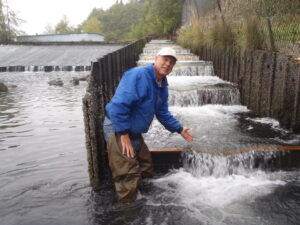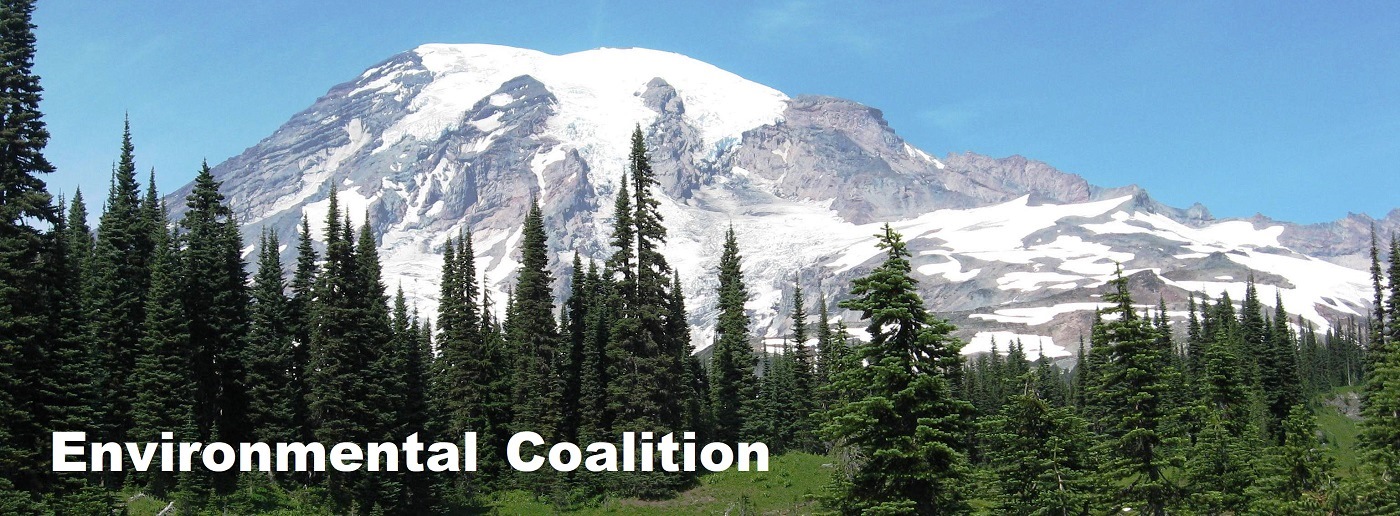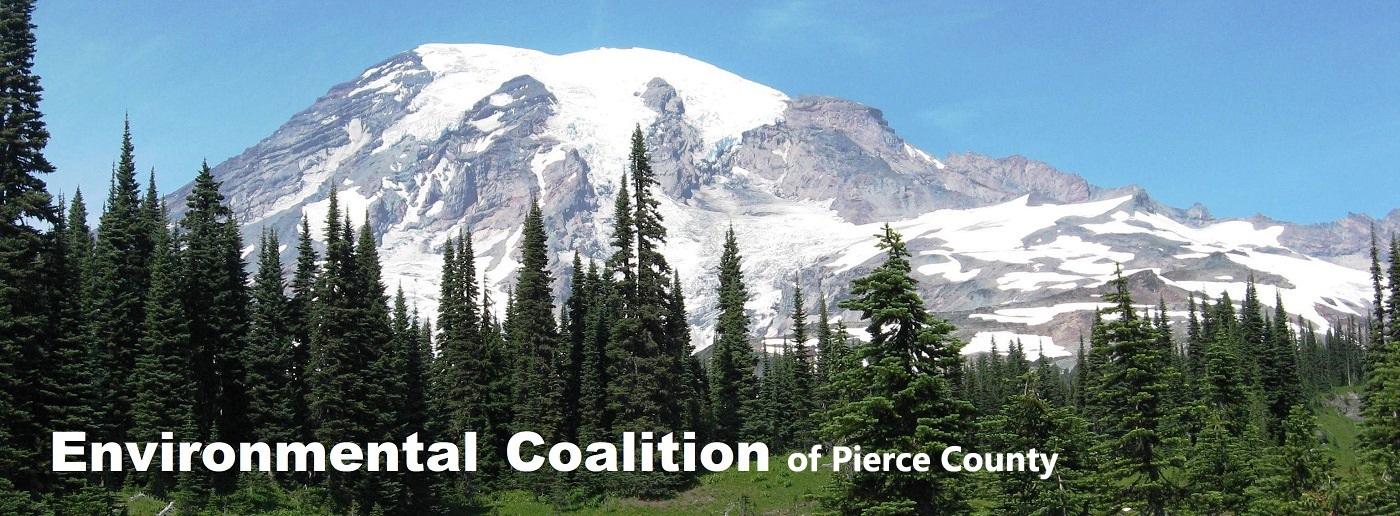Will Chinook Salmon finally swim free in Chambers Creek this summer?
Volunteers gather each summer to restore the fish ladder at Chambers Bay. County staff have funding and will remove the dam at the same time that the upstream bridged is replaced.
____________________________________________________________________
Each fall Al Schmauder gathers volunteers and Puyallup Tribe employees to repair “his” fish ladder at the Chamber Bay Dam. The ladder was restored in 2012 with help from Washington Department of Fish and Wildlife (WDFW), Pierce County, the Puyallup Tribe and many volunteers. However, each year leaks and broken timbers need to be fixed so coho, chum and other fish can get over the dam to continue their life in Chambers Creek.
WDFW does not repair this ladder, only volunteers.
The 100-year-old dam is a major fish blockage for returning salmon and for juvenile salmon heading to Puget Sound. From July through September, WDFW closes the fish ladder so they can catch all the Chinook salmon and stop them from spawning in Chambers Creek.
Pierce County Surface Water Management has been aggressively removing barriers to fish throughout the county.
The Chambers Creek Estuary is the largest coastal embayment along 40 miles of Puget Sound’s eastern shoreline between the Nisqually and Puyallup Rivers. Its removal and restoration of the estuary was the first fish-related project? initiated by the Pierce County Executive, Pat McCarthy.
In 2010 the county executive directed her staff to host a meeting with the Tribes and WDFW. After the meeting the County Executive directed Brian Ziegler, Director of Public Works & Utilities, to add a removal study to the 2011 Work Plan.
Since then Schmauder has worked with each County Executive, and county Engineers, and the Tribes, to find funding to remove the Chambers Creek Dam. Schmauder remembers Billy Frank of the Nisqually Tribe telling him, “The dam needs to go”.
Well, hold onto your hat!
After the November 2025 election, and with a new County Executive, the momentum for dam removal increased after having been stalled for fourteen years. Previous dam removal proposals had been delayed until after funding for a new upstream bridge was found.
In April 2025, Sean Goldsmith, Senior Planner for the county’s Salmon Recovery program announced that Pierce County will hire a project manager to oversee the planning and removal process.
The preliminary design and construction studies indicate that nearby bridge replacement and dam removal “should take place concurrently”, according to Goldsmith.

The costs of dam removal, bridge replacement and estuary improvements are estimated to exceed $50 million. The timeline to start construction is 2028/2029.
At a public meeting announcing the continued delay of the construction date, Schmauder asked the county staff if it was feasible to partially lower the dam or “notch” it to allow limited sediment transfer and fish passage during the next four years and during the construction process.
According to Goldsmith and engineer Tom Kantz, there are several problems with a partial removal. “It might not be done any sooner as it runs the risk of competing with project funding, permitting staff availability and partner support for the estuary restoration project in progress.”
In the end, the problem with notching the bridge, as a stand alone project, “is it simply creates a parallel and competing project that distracts us and the community from the final goal of the most effective and sustainable outcome – completely removing the dam” according to Tom Kantz.
During an interview for this story, I met with Al Schmauder at the “volunteer’s ” fish ladder at the Chambers Dam. We talked about this year’s repairs and if there was another option to get the Chinook salmon over the dam to spawn naturally in Chambers Creek.
“The ideal option is to keep the fish ladders open all year so all species of salmon could pass upstream to continue their spawning.” said Schmauder.
I asked Schmauder how many Chinook salmon are trapped at the dam each year?
According to the WDFW Escapement Report as of October 10, 2024, 1,039 total fish swam up the fish ladder on the WDFW side of the dam. Of those, only 161 were used for eggs, the remainder or 873 Chinook Salmon died in the trap or were killed when none of the surviving fish were needed for eggs.
As a result of this meeting, Schmauder asked the Chair of the County Council, Jani Hitchen if she would work with the County Executive and the County Council to initiate a government to government dialog with the three Tribes. Schmauder asked her to seek an agreement to open the ladders and let Chinook Salmon pass upstream.
Within a few hours of Al’s email to Jani Hitchen, David Troutt, who is the Nisqually Tribe, Natural Resources Manager, responded: “We are certainly open to a discussion.”
He suggested opening the fish ladder for one year, to pass all Chinook upstream, starting with the run this July. Schmauder suggested they start with a test year.
“Volunteers would monitor escapement in terms of numbers and locations, as well as out migration and some beach seining in the Bay.” Troutt suggested the adult monitoring be accomplished with volunteers and the seining and netting through a partnership with the Tribes and WDFW.
“Genetic testing could be added for co-managers to help them evaluate changing their Chinook Salmon Management Policy,” according to Schmauder.
Any excess fish that go into WDFW fish trap would be passed upstream as is the current practice for coho. The “volunteer’s” fish ladder would remain open to pass all species upstream while the WDFW ladder could be closed or opened as desired to collect brood stock or about 160 which were used for spawning last year.
This proposal would eliminate the need for WDFW staff to remove a total of 80% of the 1,039 salmon who died in the fish trap last year or were “surplussed” at the end of season when eggs were not needed as brood stock, according to the 2024 Escapement Report.
Schmauder sent related details to fish managers at WDFW in his comment on the proposal, along with an invitation to meet with the other two Indian Tribes to discuss these changes.

Al Schmauder organizes volunteer efforts to repair the fish ladder annually. Call him if you would like to help, 253-202-2486. He is past president of the Chamber/Clover Creek Watershed Council, and is the Water Steward for the Chambers-Clover Watershed.
end 1030

